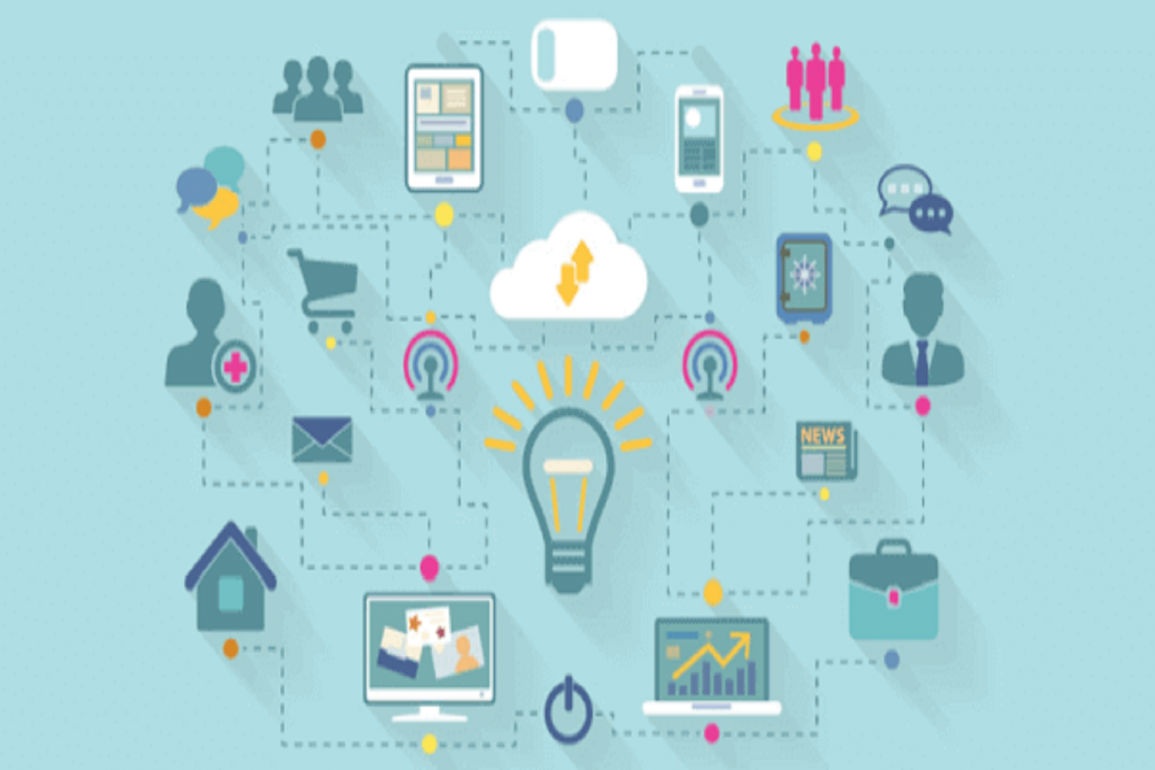By Savaram Ravindra for Enlivening Edge Magazine
Gathering, analyzing and making useful meaning from data are essential for organizations, to maintain a competitive edge, pinpoint potentially profitable areas, drive down costs, and make decisions based on fact rather than depending on the fallibility of gut instinct.
Data democratization allows more workers in an organization be in a position to assess digital-formatted data without requiring help from outside.
Freeing up access to your data by taking a more grassroots approach to data management and governance means everyone in your organization, not just your IT group can easily find, understand, and collaborate on the data they need to make impactful business decisions. (1)
The promise of easy access to data is achievable today. More and more organizations are trying to give access to data to all of their employees through data democratization and this in turn is helping them enhance the job performance and overall health of the organization. (2)
For organizations moving toward next-stage self-management practices, data democratization is important in several additional ways.
A Teal-consciousness organization must show in real-time how teams have organized to hit shared goals, saying goodbye to outdated hierarchy and bureaucracy that destroys your amazing culture, ditching the mess of stale spreadsheets and wikis used to align your team, and gaining the flexibility and transparency growing teams thrive on.
Data democratization can be seen as a process of empowerment.
While the analytical enterprise of the future requires that all employees be fully engaged by data-driven insight, there is a vital balance to be struck between data empowerment and data anarchy. Many do-it-yourself analytics platforms have the potential to keep a company’s most valuable asset—data—from reaching its full, multi-faceted potential at the fingertips of the power user if the business user is over-indulged. At the same time, businesses that don’t take the data discovery bull by the horns will find that individual employees have been doing it themselves—and developing many different answers to the same question.
Governed data discovery is the next phase of the “data democratization” movement.
Placing self-service business analytics platforms in the hands of every business user empowers them to make better decisions and add more value. It’s time for the data-driven leaders within every organization to ensure that this opportunity to reap real benefits from accessible, easy-to-grasp visualizations doesn’t pass them by. In today’s business environment, it is a standard business requirement to drive insightful, hyper-informed decision-making.
Self-management training in data analysis
In order to make sure that data democratization doesn’t come with data misinterpretation, the people of a company train each other with the creation of self-study training material by ensuring efficient dissemination of expertise through mailing lists, HipChat channels, seminars and even ensuring that learners and experts are sitting next to each other in the office.
Companies are determining that there is a large group of business users who need to explore the data more deeply and freely on their own. A combination of training and analytics tools is needed for these business users.
Rather than limiting the analytics to providing just raw or summarized data, a multi-tiered approach is recommended so different users can move towards the right depth of data depending on their analytical skills and needs.
After dashboards and static reports, the next tier might be interactive, dynamic dashboards where the users can drill into different areas to get incremental insights.
The next tier is the guided analysis experience that the analyst prepares for a group of business users or a particular user. The analyst essentially creates a safe and rich environment in which a lower number of technical users can follow the analysis process through annotations and explanations.
The last tier is the access to a visual data discovery tool where the business users can explore a broad set of data instead of via less intuitive means like data tables and SQL queries. To allow the users to impart the data in a simpler way into an analytical tool that is more familiar, like Microsoft Excel, is another alternative. As a greater level of data access is provided to the business users, an internal certification course can help avert the users from misusing and misinterpreting the data.
Data democratization is being extended to choices of platforms, architecture and tools, as well as ways the data is used or displayed.
New tools and innovative platforms, capable of handling the ever-exploding volume and variety of data, are rapidly replacing old BI tools built on SQL and OLAP. Agile BI, the most recent development in the world of BI, is causing a shift in decision-making—from ones historically made by IT about platform, architecture and BI tools—to those made by people who actually need and use the applications.
How can people make smarter decisions with data democratization?
In order to have a positive effect on decision making, users need access to data that is accurate, digestible and updated in real time. But that’s easier said than done. Most companies today want better access to data and the right tools to get them there. That information is the engine of more efficient operations and better decision making, for all departments within an organization: Salespeople need more real-time data about their customers before a client meeting; marketers need better data to establish targeted campaigns; and executives need digestible, easy-to understand data to make business decisions in real time and when they’re on the go.
And now, they can have it. Today, business intelligence no longer rests solely in the hands, and minds, of IT. All end users, from salespeople to marketers, have easy access to data and tools that improve their daily decision making. Cloud BI tools promise an unprecedented level of self-sufficiency to more or less an entire organization.
If you’re moving toward data democratization, there are 4 major pillars it rests on: people, data, tools, and training. Training has already been mentioned above.
Inquisitive People
Expertise in data analytics is closely associated with a specific type of mentality – that of open, persistent, positive, and inquisitive people. Companies are ensuring that those kinds of people are rewarded during their appraisal or hiring processes.
Besides, they are trying to keep people motivated and engaged to think, play with data, and ask questions.
The experts are invited to deliver seminars on key concepts, tools and new technologies.
Culture change is also part of the people-pillar; that’s described in the Conclusion below.
Non-siloed Data
In most organizations, a considerable fraction of data exists in silos spread across flat files, Microsoft SQL Server, with partner companies and in the private folders of the people. As one would expect, this is not conducive to allowing anyone to view the ‘big picture.’ The creation of a cloud-based data warehouse is being done by some companies to tear down the silos. This acts as a consolidated solitary source of truth for data analytics. Cloud storage has proved especially effective for breaking down data silos by creating a central location for data to be stored.
Variety of Tools
Not all types of data can be processed by a single analytical tool. For a powerful and accessible self-service analytics, we can use Tableau Server and Tableau Desktop. We can also consider open source alternatives like caravel of Airbnb or Apache Zeppelin. For a heavy data processing and more involved analyses, we can utilize Python and its remarkable PyData stack that runs on an in-house JupyterHub set up based on Docker.
Advances in virtualization are making data democratization much easier at the technical level and negating the need for ad hoc, highly labor-intensive processes. Data virtualization software, for example, allows an application to retrieve and manipulate data without requiring technical details about the data, such as how it is formatted or where it is physically located.
Data federation software also facilitates democratization by aggregating data from disparate sources in a virtual database so it can be used for business intelligence (BI) or other analyses. The virtual database created by data federation software doesn’t contain the data itself. Instead, it simply contains metadata about the actual data and its location.
Self-service BI applications can provide non-technical end users with data visualization tools that make data analysis easier to understand. For example, online survey tools with data visualization and reporting capabilities have made it easier for marketing teams to gather and analyze consumer data and share actionable information in real time.
Conclusion
In your current organization, if you want to increase data democratization, you must keep in mind that this is a slow process in which small wins are brought through incremental transformations in culture which, in turn, boost the next culture change.
One of the cultural changes includes data security readiness—the culture of using and accessing data from any device, location or time will grow in future. To enable anytime, anywhere access to data, data security, compliance, and data access rights should be well taken care of at the time of making a transition to self-service analytics.
The existence of a Teal-conscious organization must be unique. It must start from where it is, must set its own priorities—what changes to make first. It must choose what tools and techniques to adopt, and in what order and must have a unique experiential journey leading, hopefully, to its individual expression of fulfilling its purpose. These are the particular goals of a Teal-consciousness organization and data democratization can be an important contributor.
(1) Other drivers of the data democratization movement: Business requirements are (finally) becoming more important; businesses need to learn more about consumer behavior in order to sell products, which it does by analyzing data. In a consumer-driven economy, it is imperative that data be delivered as fast as possible in an easily and quickly understood format. Self-service analytics are exploding, leading to the democratization of data.
(2) Still, despite the trend of data democratization, many organizations have yet to realize the benefits; they aren’t taking advantage of Business Intelligence (BI) tools to get easy access to data that is technically quite possible. In fact, Gartner surveys indicate that 70% of potential BI users fail to adopt CIO-sponsored analytics tools. With 71% of companies planning to increase their analytics budgets in 2016, it is imperative that users adopt new analytics tools and prevent that investment from going to waste.
 Savaram Ravindra was born and raised in Hyderabad, popularly known as the ‘City of Pearls’. He is presently working as a Content Contributor at Mindmajix.com. His previous professional experience includes Programmer Analyst at Cognizant Technology Solutions. He holds a Masters degree in Nanotechnology from VIT University. He can be contacted at [email protected]. Co
Savaram Ravindra was born and raised in Hyderabad, popularly known as the ‘City of Pearls’. He is presently working as a Content Contributor at Mindmajix.com. His previous professional experience includes Programmer Analyst at Cognizant Technology Solutions. He holds a Masters degree in Nanotechnology from VIT University. He can be contacted at [email protected]. Co



